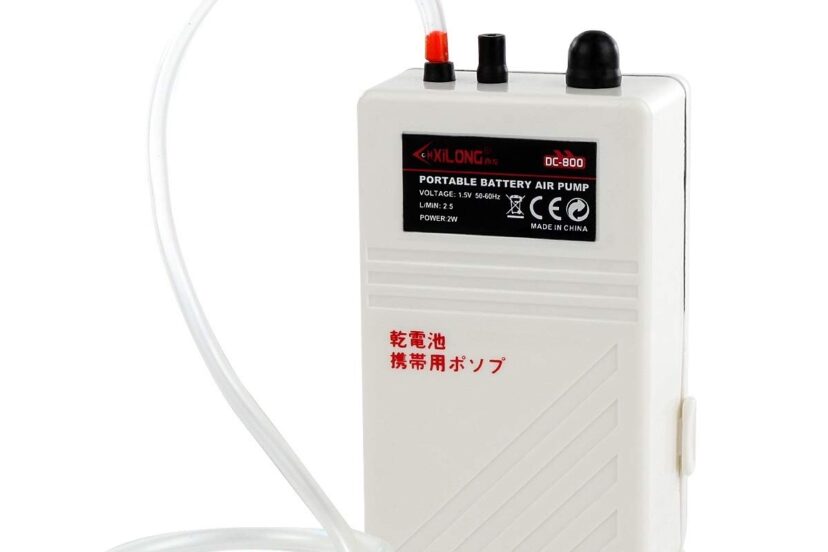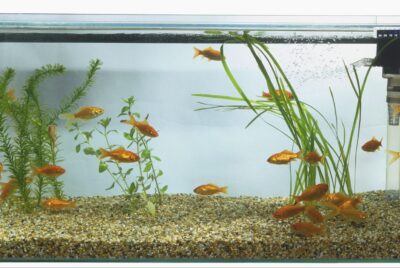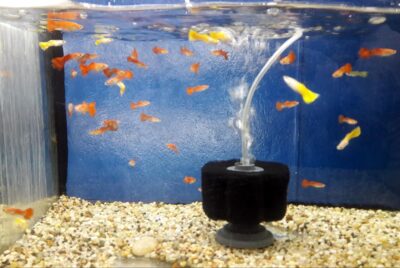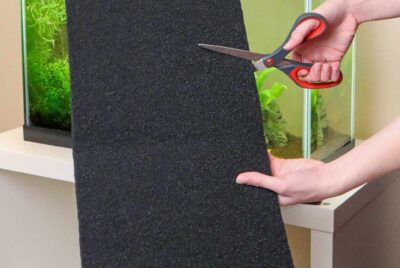Battery Powered Air Pump Aquarium
As an avid fishkeeping enthusiast and advisor, I understand the importance of maintaining a thriving aquatic environment for our beloved underwater companions. One essential aspect of aquarium care is ensuring adequate oxygen levels, which can be effectively achieved with the help of a battery-powered air pump for your aquarium. In this article, I’ll explore the significance of air pumps, the benefits of battery-powered models, factors to consider when choosing one, best practices for usage, and recommend some top-rated options available in the market.
Importance of Air Pumps in Aquariums
Aquariums are delicate ecosystems where maintaining proper oxygen levels is crucial for the well-being of fish and other aquatic organisms. In a confined space, the natural oxygen exchange can be limited, especially when the tank is heavily stocked or lacks sufficient surface agitation. This is where an air pump plays a vital role by providing aeration and improving water circulation, recreating a healthier environment akin to their natural habitat.
Benefits of Battery-Powered Air Pumps
Reliable and Portable
Battery-powered air pumps offer numerous advantages, making them a popular choice among fish keepers. Their reliance on batteries ensures an uninterrupted oxygen supply, even during power outages or while transporting fish. These pumps are compact, lightweight, and easy to install, allowing for greater flexibility in tank placement and rearrangement.
Maintaining Oxygen Levels
Consistent oxygen levels are essential for fish respiration, aerobic bacteria growth, and preventing the formation of harmful gases like carbon dioxide. Battery-powered air pumps effectively aerate the water, creating bubbles and increasing the surface area for oxygen exchange. This promotes healthier fish, reduces stress, and helps prevent oxygen depletion, which can be particularly critical during hot summer months.
Power Outage Safety
During power outages, traditional electrical air pumps become non-functional, causing a rapid drop in oxygen levels and jeopardizing the lives of fish. With battery-powered pumps, you can rest assured that your aquarium will continue receiving vital aeration, safeguarding your aquatic pets during unexpected electrical disruptions.
Versatile Applications
Battery-powered air pumps are not only useful for main aquariums but also serve various other purposes. They can be employed in quarantine tanks, breeding setups, or when transporting fish. Additionally, they come in handy during outdoor activities like fishing trips or when keeping fish in garden ponds, providing aeration and preventing stagnation.
Factors to Consider When Choosing a Battery-Powered Air Pump
When selecting a battery-powered air pump for your aquarium, several factors should be taken into account to ensure optimal performance and longevity.
Pump Capacity and Airflow
The pump’s capacity should be suitable for your aquarium size, considering the volume of water it can effectively aerate. Similarly, the airflow rate is essential, as it determines the amount of oxygen being circulated within the tank. Carefully assess your tank’s requirements and choose a pump that can meet them adequately.
Battery Life and Charging Options
Opt for a pump with a battery life that matches your needs. Longer battery life ensures extended operation without frequent recharging. Consider the available charging options, such as USB or solar charging, which can provide convenient alternatives in different situations.
Noise Levels
Excessive noise from air pumps can be disruptive and cause stress to both fish and humans. Look for models that operate silently or have noise reduction features, ensuring a peaceful aquarium environment.
Durability and Waterproofing
Given the exposure to moisture and occasional splashes, it’s crucial to choose a pump with excellent waterproofing capabilities. Look for models that are specifically designed for aquarium use, constructed with durable materials, and have appropriate sealing to prevent water damage.
Best Practices for Using Battery-Powered Air Pumps
To optimize the performance of your battery-powered air pump and maintain a healthy aquatic environment, follow these best practices:
Placement and Tubing
Position the air pump slightly above the waterline to prevent water from backflowing into the pump, which can damage the internal components. Connect the pump to air stones or diffusers using flexible tubing, ensuring proper placement for maximum oxygenation.
Regular Maintenance
Periodically clean the air pump, removing any debris or blockages that might impede airflow. Check the tubing for kinks or clogs, as these can restrict the oxygen supply. Regular maintenance guarantees optimal performance and extends the lifespan of your air pump.
Monitoring Oxygen Levels
Regularly monitor the oxygen levels in your aquarium using appropriate test kits. This ensures that the air pump is functioning correctly and maintaining adequate oxygen saturation for the fish and plants in your tank.
Recommended Battery-Powered Air Pumps for Aquariums
When it comes to choosing a battery-powered air pump, here are three top-rated options that are highly recommended:
Product A: Features and Benefits
Product A is a versatile and durable battery-powered air pump known for its exceptional performance and long-lasting battery life. With adjustable airflow settings and a compact design, it provides optimal aeration for aquariums of various sizes.
Product B: Features and Benefits
Product B is a reliable and compact air pump designed specifically for aquarium use. Its noiseless operation, waterproofing, and energy-efficient performance make it an excellent choice for maintaining oxygen levels and enhancing water circulation.
Product C: Features and Benefits
Product C is a powerful battery-powered air pump suitable for larger aquariums. With its robust construction, extended battery life, and high airflow rate, it ensures efficient aeration and is ideal for tanks with a substantial fish population or dense plant life.
Conclusion
Investing in a battery-powered air pump for your aquarium is a wise decision to maintain optimal oxygen levels and create a healthy environment for your fish. These portable and reliable devices offer numerous benefits, including uninterrupted operation during power outages, versatility in usage, and the ability to prevent oxygen depletion. By considering important factors such as pump capacity, battery life, noise levels, and durability, you can select the most suitable air pump for your specific aquarium requirements. Following best practices and regularly monitoring oxygen levels will ensure the longevity and effectiveness of your battery-powered air pump, providing a thriving habitat for your aquatic pets.
Frequently Asked Questions
Q: Can I use a battery-powered air pump as the sole source of oxygen in my aquarium?
A: While battery-powered air pumps are useful for supplemental oxygenation, they are not intended to replace the primary source of oxygen in your aquarium. It’s important to have proper filtration and aeration systems in place to maintain a healthy environment for your fish.
Q: How long does the battery of a battery-powered air pump typically last?
A:The battery life of a battery-powered air pump varies depending on factors such as pump capacity, airflow rate, and battery capacity. On average, you can expect battery life to range from several hours to a few days. It’s advisable to choose a pump with a battery life that suits your specific needs.
Q: Can I use a battery-powered air pump in saltwater aquariums?
A: Yes, battery-powered air pumps can be used in both freshwater and saltwater aquariums. However, it’s essential to choose a model specifically designed for marine environments, as saltwater can be corrosive. Check the product specifications to ensure suitability for saltwater use.
Q: Can I connect multiple air stones to a battery-powered air pump?
A: Yes, you can connect multiple air stones or diffusers to a battery-powered air pump. However, it’s important to consider the pump’s airflow capacity to ensure that each stone receives adequate oxygen supply.
Q: Are battery-powered air pumps suitable for large aquariums?
A: Battery-powered air pumps can be used in large aquariums, but it’s crucial to choose a model with sufficient pump capacity and airflow rate to meet the oxygenation needs of the tank. Consider options specifically designed for larger aquariums or consult with an expert for the best recommendation.




